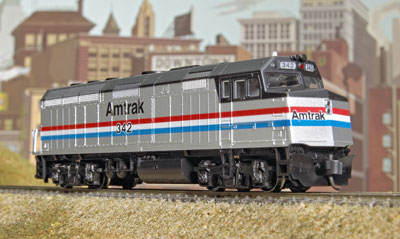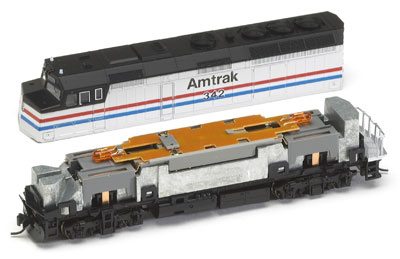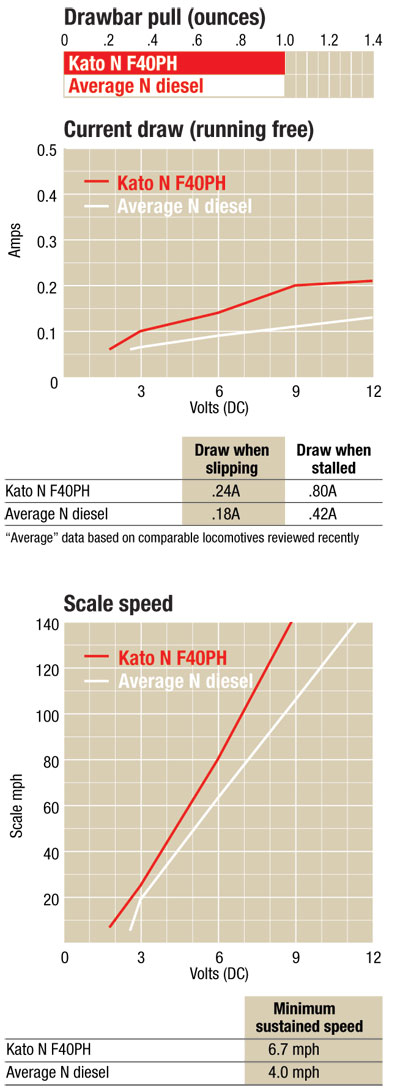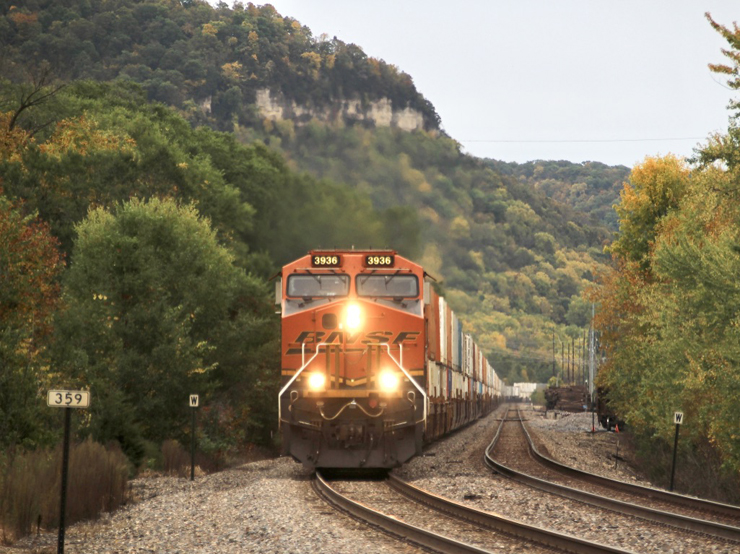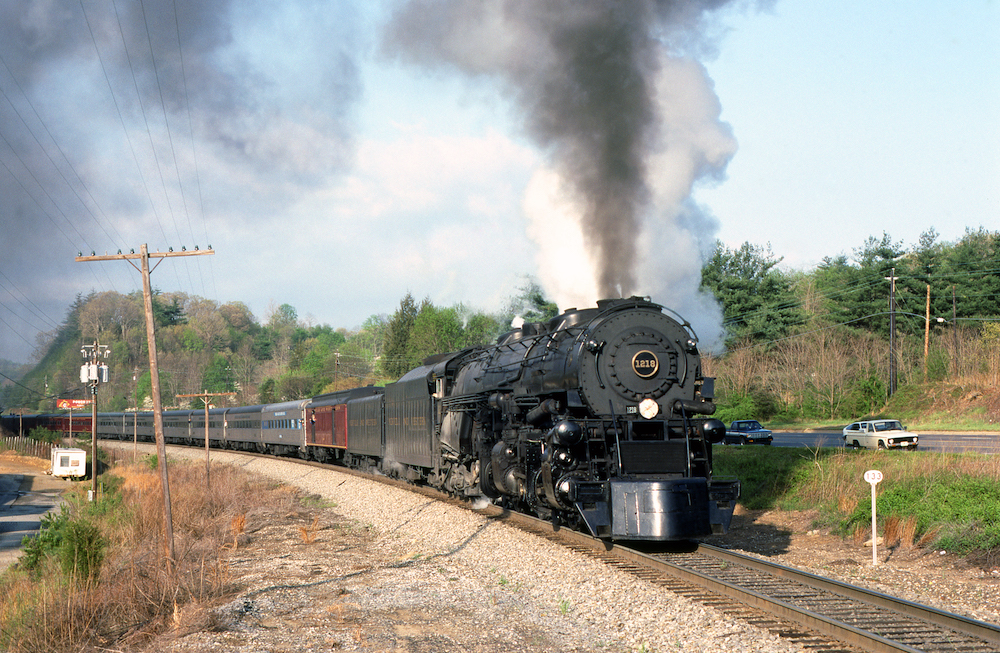Amtrak’s prototype fleet. Shortly after Amtrak began operations in 1971, its need for new passenger locomotives became critical. Thus, Electro-Motive Division revised its popular Dash-2 road freight unit designs by adding cowl carbodies to create the SDP40F (C-C) in 1973 for heavy, long-haul trains and the F40PH (B-B) in 1976 for shorter intercity trains. When the big units suffered tracking problems, the smaller F40PH successfully took on the long-haul role and quickly became Amtrak’s primary diesel passenger locomotive.
By 1988 Amtrak had a fleet of 210 F40PHs that railfans divide into three groups or phases for spotting purposes. The original 30 phase 1 units (200-229) have a 1,500-gallon fuel tank positioned just ahead of the rear truck. This is shown in the drawing that was published in the April 1987 Model Railroader. The phase 2 units (230- 328) and phase 3 units (329-409) looked similar, but they had larger 1,800-gallon fuel tanks mounted just behind the lead truck.
Our sample F40PH came fully assembled except for the installation of the front number boards and the actuating levers on the Kato magnetic knuckle couplers. A single instruction sheet explains the installation of these parts.
The locomotive has a one-piece body shell with nearly all the details molded in place. Its detailing is sharp with some of the finest rivet and batten strip detail I’ve seen in any scale. The cab has clear window glazing.
Our sample F40PH was neatly decorated. All of the printed lettering and stripes are clear and opaque except for a couple minor breaks over surface details.
Two concealed latches lock the body onto the chassis. They’re located under the right rear and left front corners. Gently slipping a small screwdriver up between the shell and the frame at these two points will easily release the chassis with minimal force.
An ingenious wireless electrical system picks up current from all eight wheels. Because both trucks are acetal plastic, the drivers are fully insulated from the chassis. An inverted T-shaped copper contact strip runs down each side of the truck gear towers and extends across the backs of the sideframes to pick up current from the axle ends. Two rounded pickup tabs on top of both trucks make positive contact with two phosphor-bronze pickup strips that extend the length of the unit to carry the current to the printed-circuit (PC) board and motor.
The PC board includes the headlight-control circuit. However, the model is designed so the PC board can be easily replaced with a Digitrax F40PH decoder for Digital Command Control (DCC).
Performance. Our sample F40PH was quiet, but seemed a little stiff as it started at 6.7 scale mph on 1.8 volts. I expect this speed to drop somewhat lower after the mechanism has been run for a while. The model’s drawbar pull is equivalent to 23 freight cars on straight and level track. It’s capable of hauling Amtrak’s rated 8 cars per unit.
The model’s top speed of 194 scale mph is well above the prototype’s 103 mph maximum. Most passenger speed limits are in the 70-79 mph range nationwide, the middle of the model’s speed range.
Kato notes that the locomotive will negotiate a 9¾”-radius curve. However, with scale-length passenger cars it’ll look far better gliding around wider curves.
It’s great to see this smooth-running and well-detailed locomotive. As Amtrak’s universal locomotive of the 1970s and 1980s, this model F40PH will be right at home hauling prototype-size trains on any Amtrak-era layout.
Price: $95 each, $190 for 2-unit set
Manufacturer
Kato U.S.A. Inc.
100 Remington Rd.
Schaumburg, IL 60173
www.katousa.com
Description
Plastic-and-metal ready-to-run
diesel passenger locomotive
Road names
Amtrak Phase 3 single unit no. 342, two-unit set nos. 333 and 339, and undecorated single unit
Features
Directional light-emitting-diode headlight
Drawbar pull: 1 ounce
Eight-wheel electrical pickup
Engine weight: 3.5 ounces
Electrically isolated motor for easy conversion to Digital Command Control
Five-pole Kato can motor
Illuminated numberboards with printed numbers
Kato magnetic knuckle couplers (mounted at correct height)
Minimum radius: 9¾”
NMRA RP-25 wheels (in gauge)





